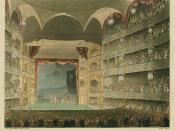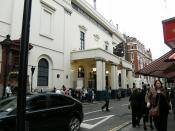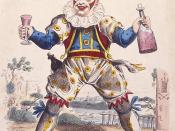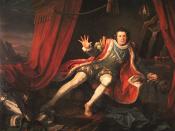Pantomiming was traditionally a Christmas spectacle, primarily for the children. Pantomiming is thought by many to be a British theatrical performance, but it is actually from the Italian Commedia Dell'arte, from which many of the basic pantomime characters have evolved. This art was known in England as Harlequinades. They were simply after pieces to larger, longer, plays usually comedies or tragedies. Pantomiming evolved throughout the eighteenth century so much though that even David Garrick was forced, by the public, to introduce Queen Mab, his first pantomime.
The first recognizable pantomime was probably Robinson Crusoe at Drury Lane, which contained a transformation scene and introduced the infant Joseph Grimaldi. Aladdin and his Wonderful Lamp followed at Covent Garden, with Babes in the Wood performed as an opera at the Haymarket.
By the 1800's was starting to become a distinctly different type of theater. It was becoming more and more a part of the evening's entertainment.
In 1804 Cinderella was preformed at Drury Lane and in 1806 Mother Goose was preformed at the Covent Garden and Sleeping Beauty at Drury Lane. During the next twenty years At the beginning of the 1900's pantomiming was at its peak, but rising costs, began to cause pantomiming business to fall. However, pantomime continues to prosper throughout the country in some 200 annual professional productions, and amateur performances run into thousands around the world. It is frequently the first live theater seen by small children, who keep a sentimental love for it and, in their turn, bring their own children to see it later in their life.




